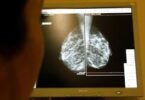Monitoring Desk
Stanford, United States: Improvements in treatment and screening methods have led to a significant decline in breast cancer-related deaths in the United States, according to a new study.
Breast cancer mortality dropped by 58% from 1975 to 2019, researchers from Stanford University found in new research published Tuesday in JAMA.
In 1975, 48 out of every 100,000 women were estimated to have died of breast cancer. That figure dropped to 27 per 100,000 by 2019.
The reduction is attributed to improvements to how breast cancer is identified and treated. The Stanford team credited 49% of the improvement to better treatments for stages 1 to 3 of breast cancer and 25% to improved screening methods.
Improvements in treating metastatic breast cancer, when the disease spreads to other areas of the body and becomes harder to treat, contributed greatly to the reduction, too.
These improvements would not be possible without breast cancer research, which has grown significantly since 1975.
The authors point to the more than 2,000 breast cancer clinical trials that are registered with ClinicalTrials.gov as evidence of this, adding that these trials have led to the Food and Drug Administration’s approval of 30 new drugs for treating breast cancer between 2010 and 2020.
Of those drugs, 26 treat metastatic disease and four were developed to treat breast cancer stages 1 to 3.
During that same time, breast cancer screening methods have also improved. Mammograms have come a long way since the 1970s.
For decades, mammograms produced 2D images of the breast, resulting in between four and eight images per exam.
But today, around half of imaging facilities use 3D digital breast tomosynthesis (DBT) mammogram technology, which produces hundreds of images from just a single exam and gives radiologists a much more detailed view of a person’s breast tissue.
Several studies have shown DBT exams to be more accurate and detect cancer earlier than standard 2D mammograms.
DBT studies are especially beneficial for women with dense breast tissue, as increased breast density not only increases the likelihood of developing cancer, it also makes it more difficult to spot abnormalities on imaging.
More than half of women in their 40s have dense breast tissue, as do 40% of women in their 50s and 25% of women 60 and older.
Detecting breast cancer early is key to survival. When caught before it has spread beyond the breast, the disease has a 99% survival rate.







